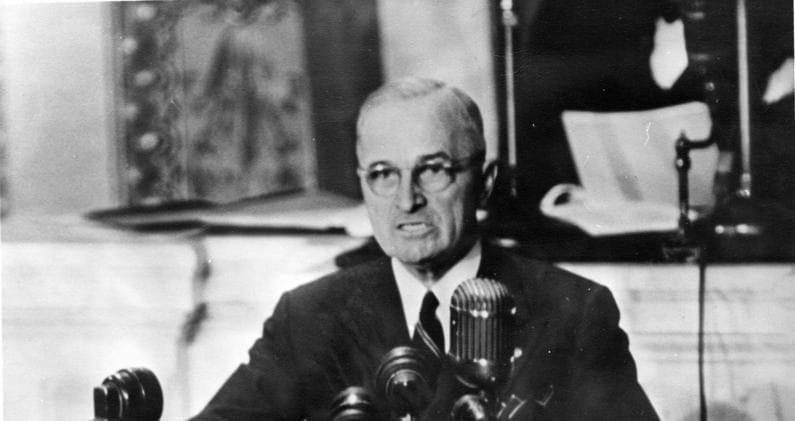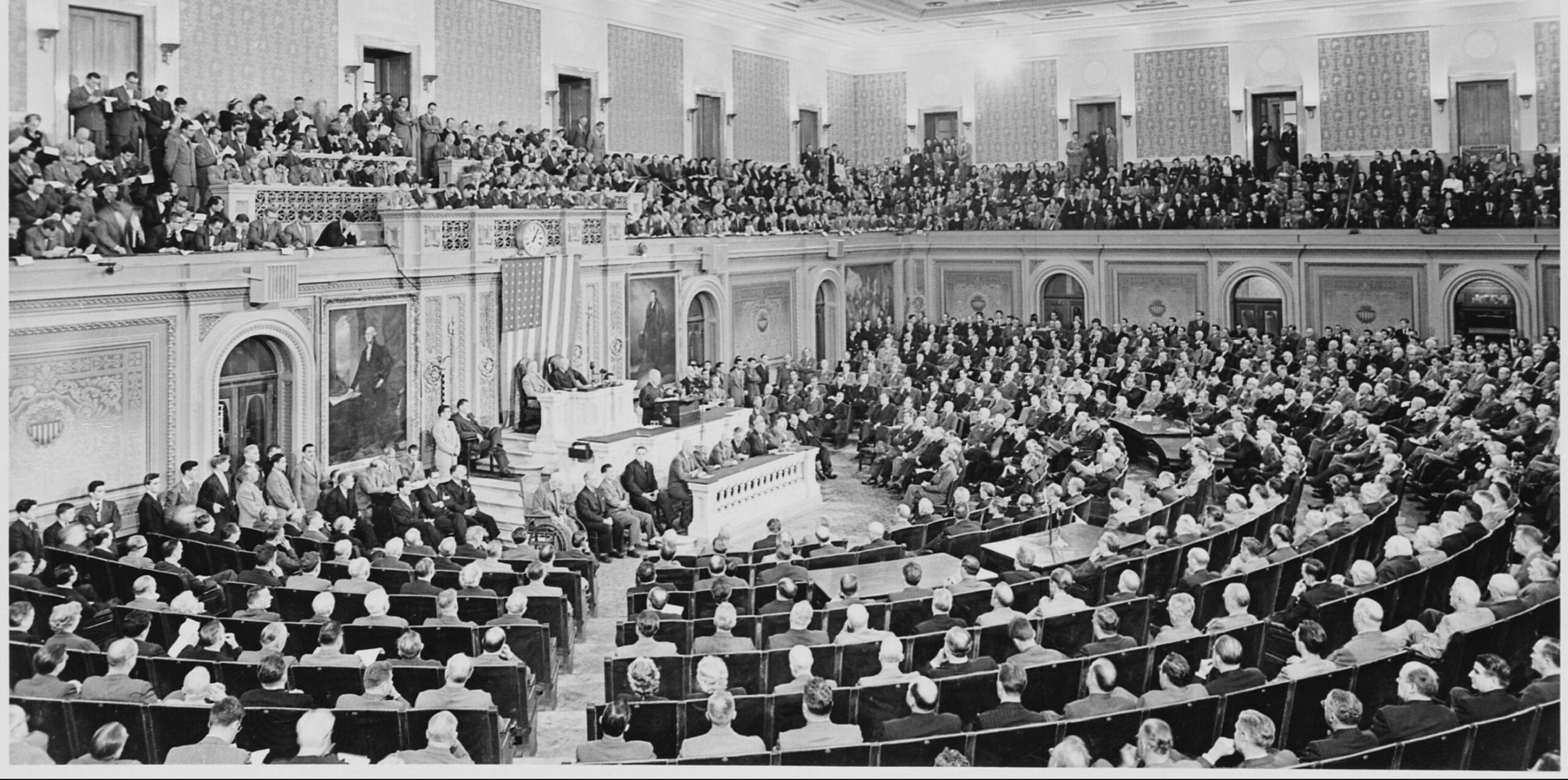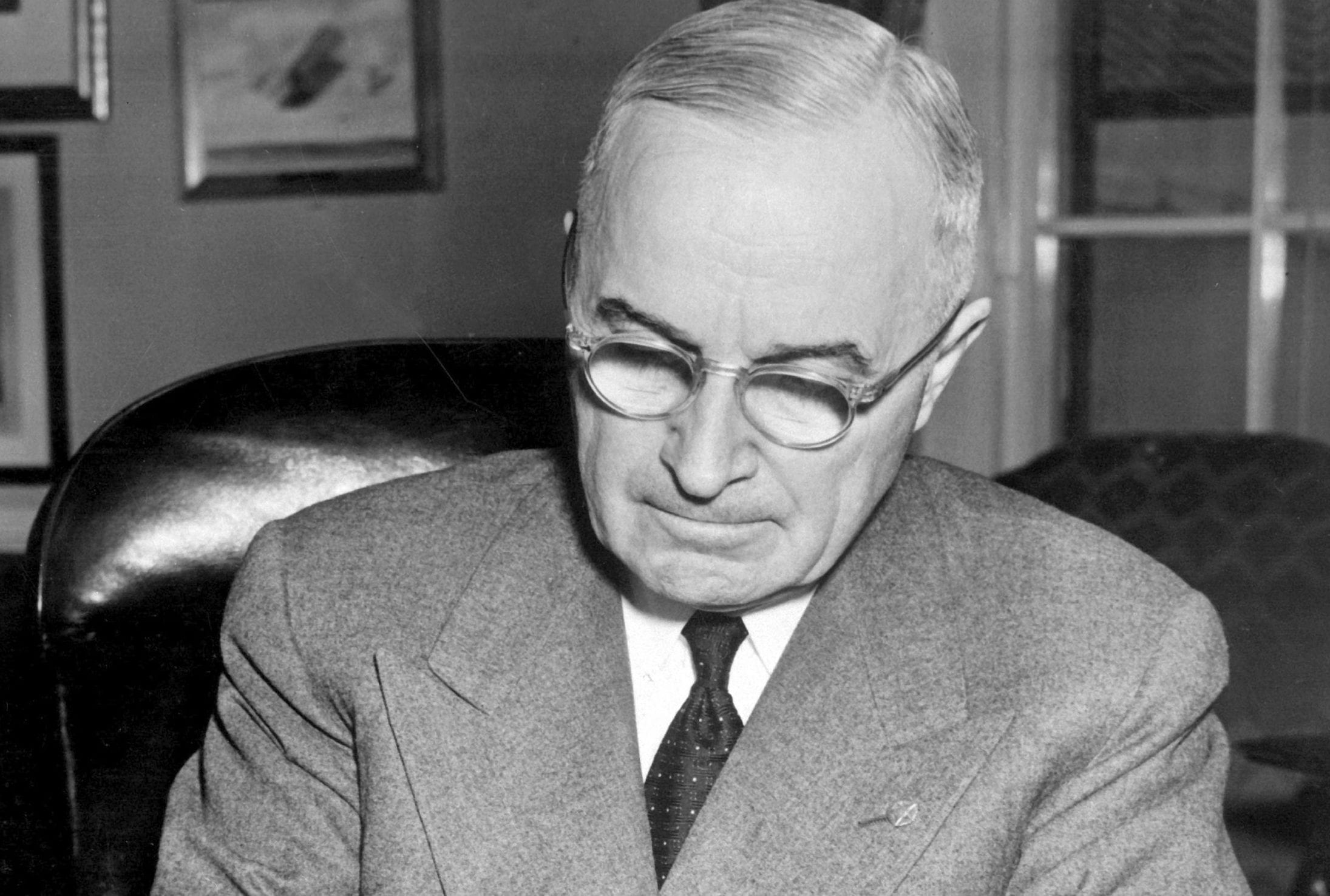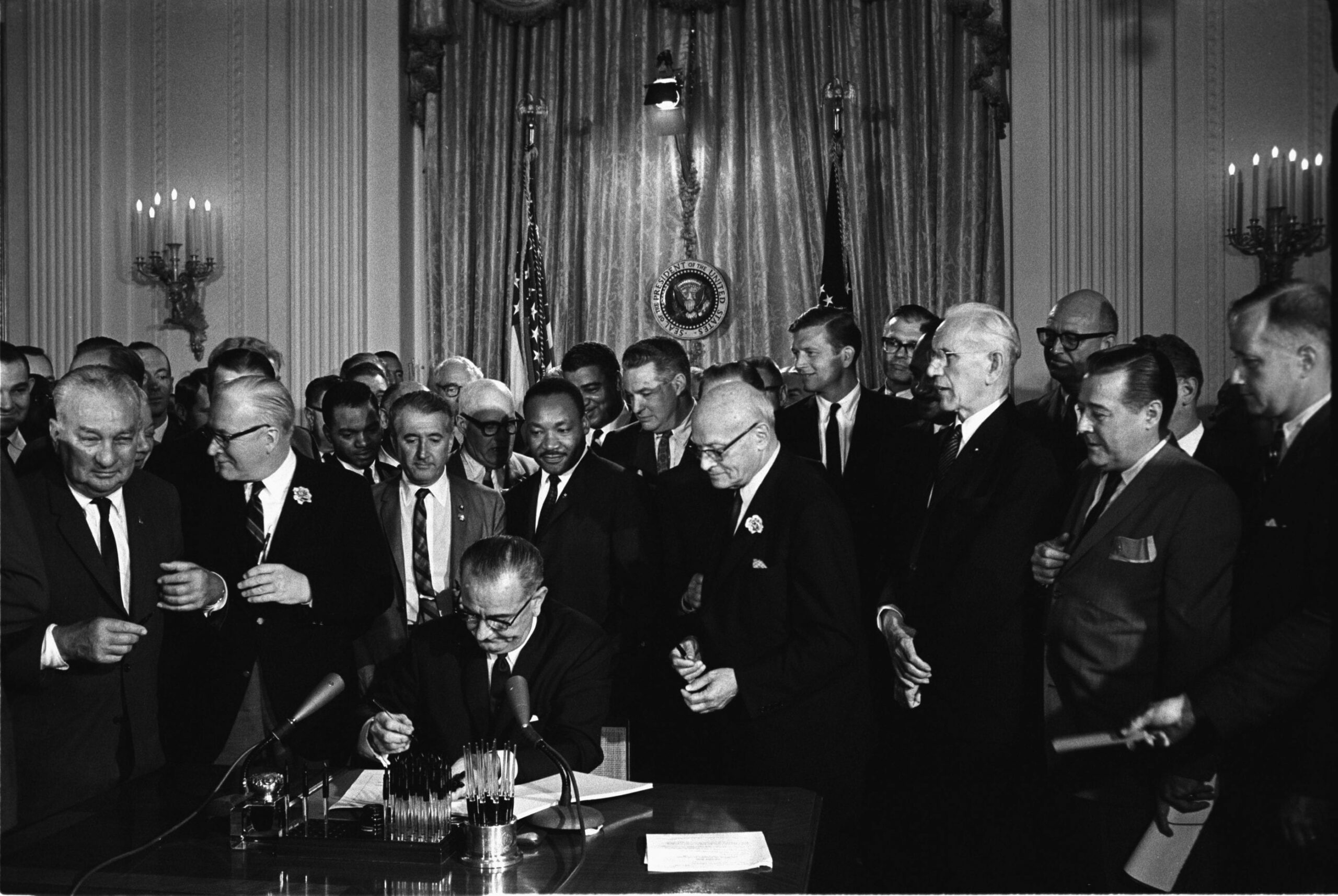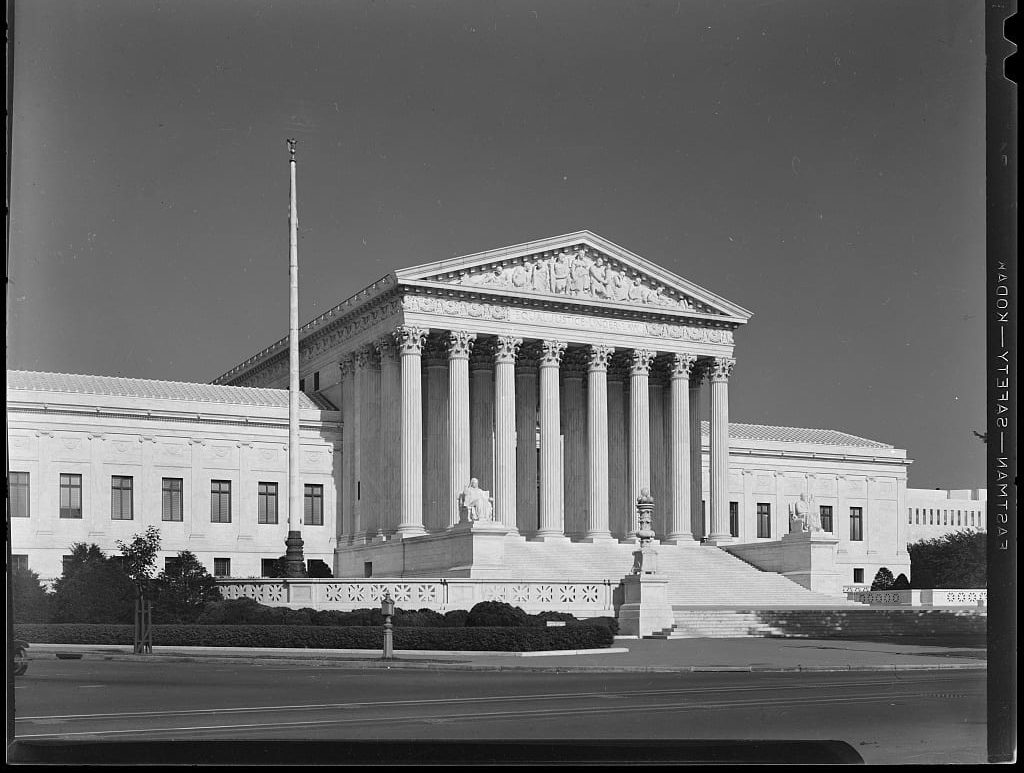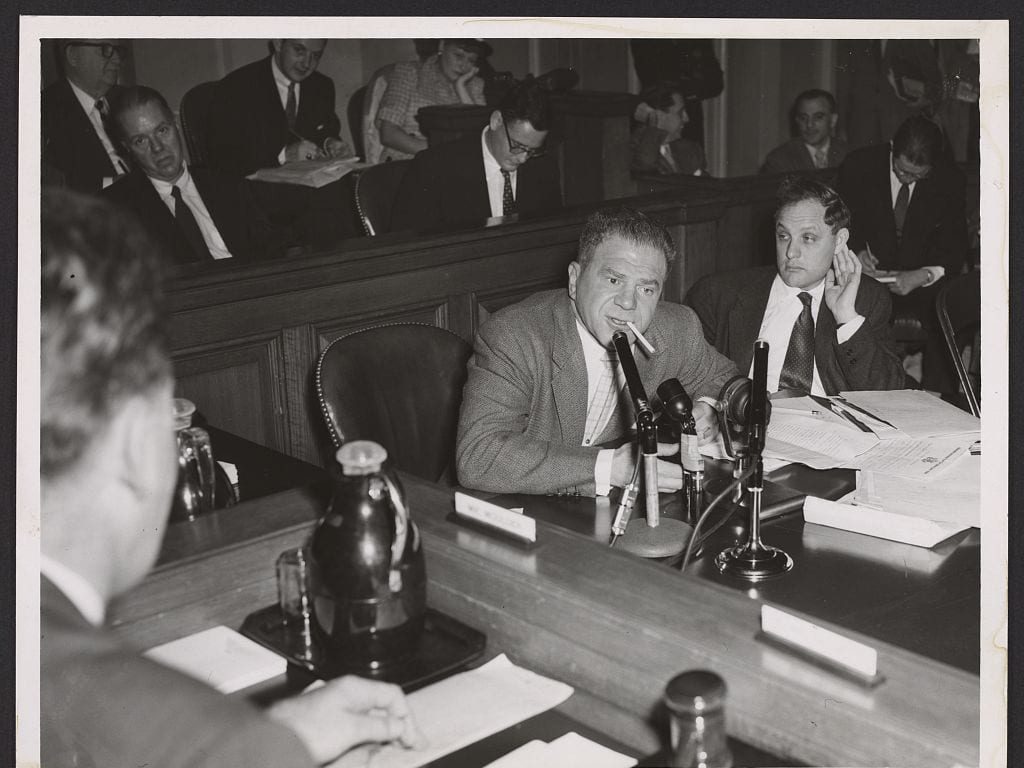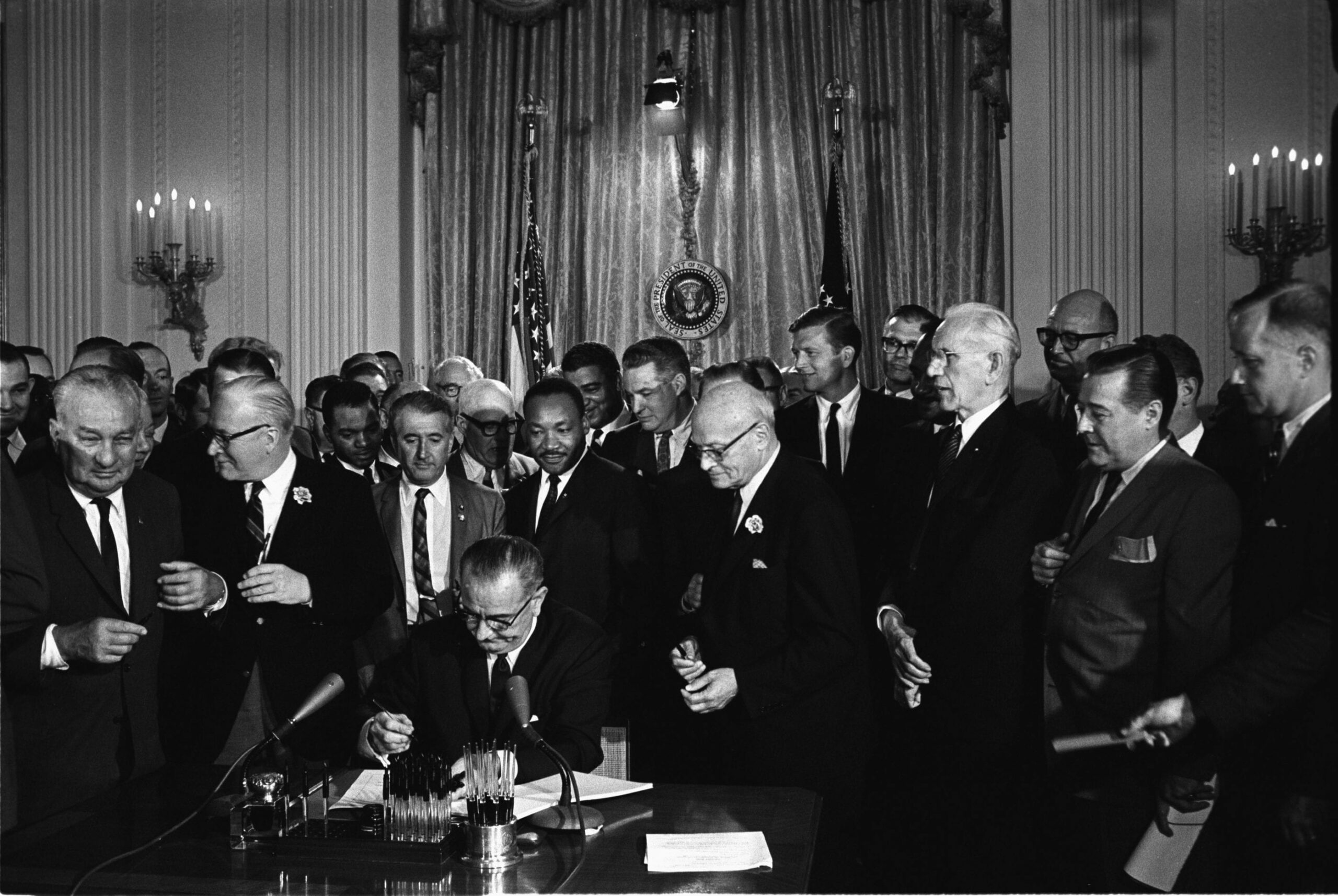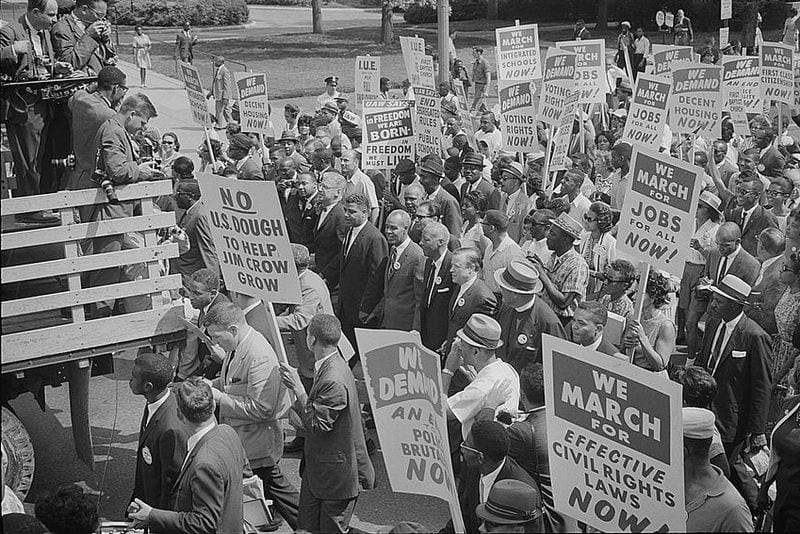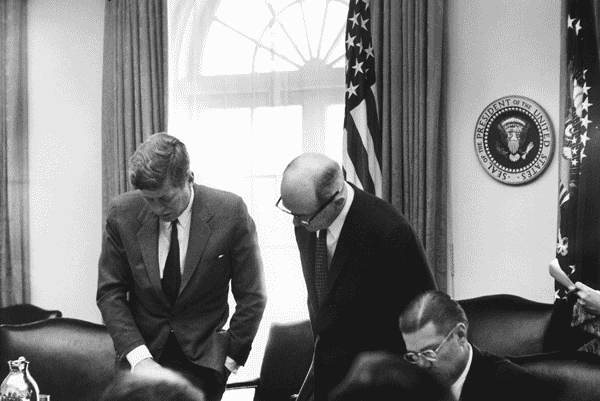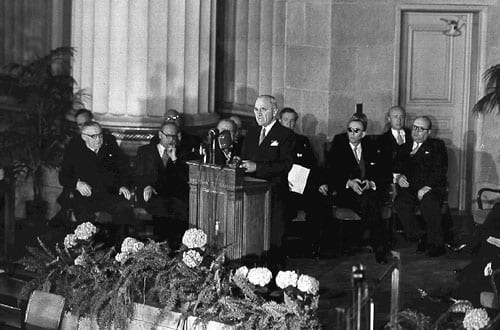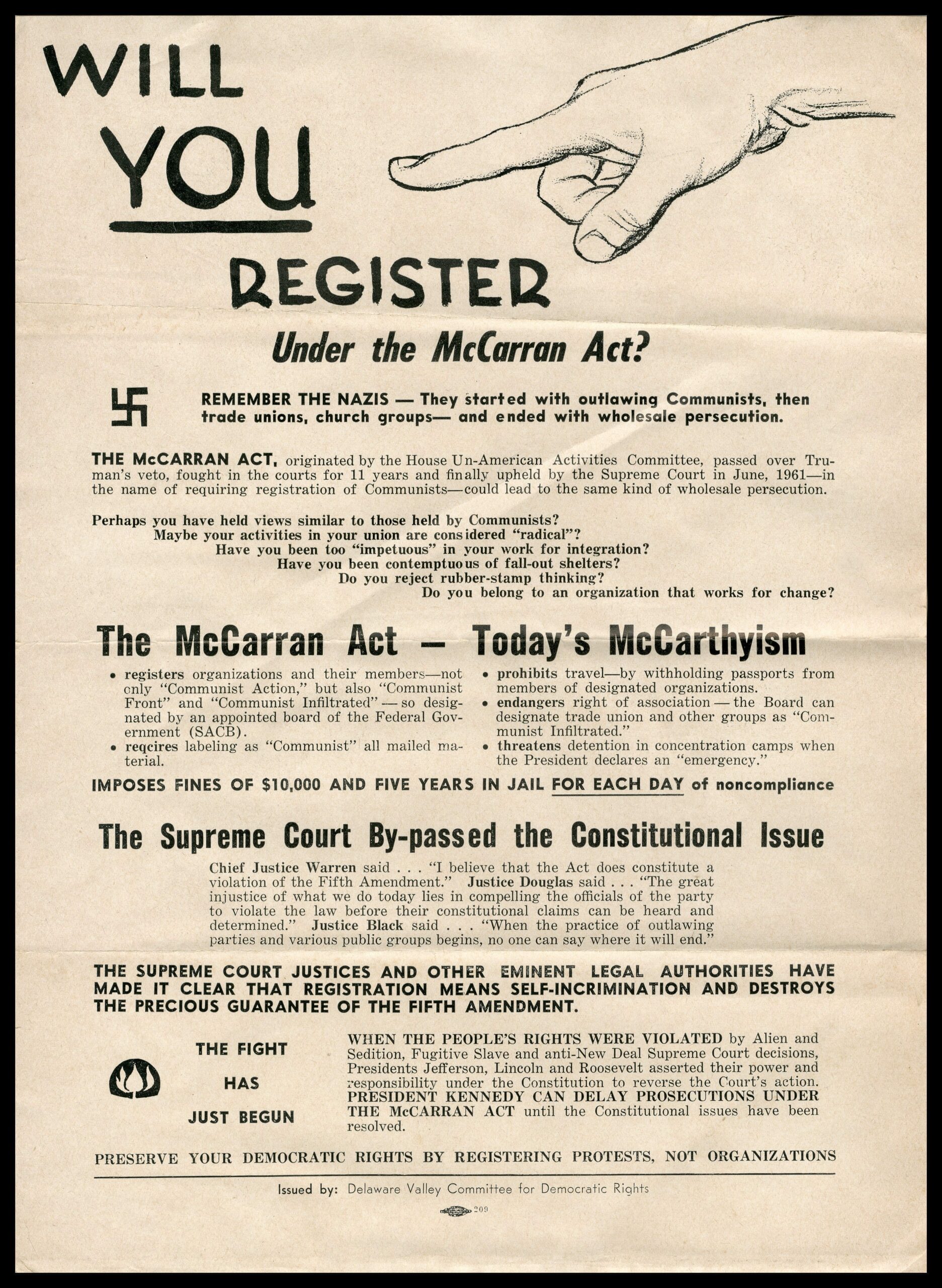

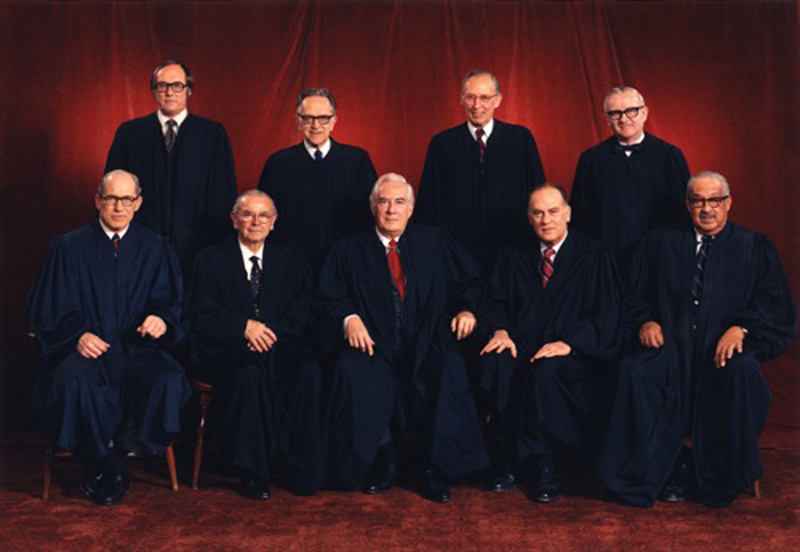
No related resources
Introduction
The Eighth Amendment states that “[e]xcessive bail shall not be required, nor excessive fines imposed, nor cruel and unusual punishments inflicted.” How should a court interpret “excessive” or “cruel and unusual”? In the early twentieth century, the Supreme Court held that fines are excessive if they are so disproportionate to the offense as to constitute a violation of “due process of law.” In the same era, the Court declared in Weems v. US (1910) that the meaning of “cruel and unusual punishments” “is not fastened to the obsolete, but may acquire meaning as public opinion becomes enlightened by a humane justice.” The Court thus laid the foundation for an evolving interpretation of the Eighth Amendment.
After holding in the 1960s that the prohibition on cruel and unusual punishments applies to the states through the Fourteenth Amendment, the Court applied the Weems principle in Furman v. Georgia (1972) to strike down the death penalty as it was being used by the states. In Furman, the Court held that the existing system of capital punishment used by the states was “cruel and unusual punishment” because sentencers were often given unguided discretion to impose or not to impose the death penalty for murder and because the penalty was being imposed discriminatorily, “wantonly and freakishly,” and so infrequently. The Court was split, however, over the death penalty itself: Four Justices would have held that capital punishment is not unconstitutional per se; two Justices would have reached the opposite conclusion; and three Justices, while agreeing that the statutes then before the Court were invalid as applied, left open the question whether such punishment may ever be imposed. Congress and many states responded to Furman by changing their procedures for sentencing and implementing the death penalty, which they then began to reimpose as a punishment.
The first test of whether the reformed death penalty was itself a “cruel and unusual” punishment came in 1976 in Gregg v. Georgia (one of several decided together by the Court). Troy Gregg was convicted by a jury of two counts of armed robbery and two counts of murder. At the penalty stage, the judge instructed the jury that it could recommend either a death sentence or a life prison sentence on each count; that it was free to consider mitigating or aggravating circumstances, if any, as presented by the parties; and that it would not be authorized to consider imposing the death sentence unless it first found beyond a reasonable doubt (1) that the murder was committed while the offender was engaged in the commission of other capital felonies, viz., the armed robberies of the victims; (2) that he committed the murder for the purpose of receiving the victims’ money and automobile; or (3) that the murder was “outrageously and wantonly vile, horrible and inhuman” in that it “involved the depravity of [the] mind of the defendant.” The jury found the first and second of these aggravating circumstances and returned a sentence of death. The Georgia Supreme Court affirmed the convictions. Gregg appealed to the US Supreme Court, arguing that imposition of the death sentence was cruel and unusual punishment under the Eighth and Fourteenth Amendments. By a 7-2 vote, the Court upheld Georgia’s imposition of the death penalty in this case. There was no majority opinion, however, with Justice Stewart writing for a plurality of three justices.
Because of split opinions, it was not clear what precedent was set by Gregg beyond accepting the constitutionality of the death penalty for murder under the procedures set by Georgia’s law. The Court, for example, did not fully say for what (or on whom) capital punishment could be imposed. Over the next thirty years, the federal courts continued to accept the constitutionality of the death penalty itself but applied the Weems principle of an evolving interpretation of “cruel and unusual” to narrow the circumstances in which capital punishment could be imposed. For example, the Supreme Court ruled that the death penalty is cruel and unusual when imposed for rape (Coker v. Georgia [1977]), including the rape of a child (Kennedy v. Louisiana [2008]); on the mentally disabled (Atkins v. Virginia [2002]); or on someone who was under 18 years of age when he or she committed a crime (Roper v. Simmons [2005]).
Source: 428 U.S. 153; https://www.law.cornell.edu/supremecourt/text/428/153#writing-ZS
Justice STEWART announced the judgment of the Court, joined by Justices POWELL and STEVENS.
. . . We address initially the basic contention that the punishment of death for the crime of murder is, under all circumstances, “cruel and unusual” in violation of the Eighth and Fourteenth Amendments of the Constitution. . . .
The Court, on a number of occasions, has both assumed and asserted the constitutionality of capital punishment. In several cases, that assumption provided a necessary foundation for the decision, as the Court was asked to decide whether a particular method of carrying out a capital sentence would be allowed to stand under the Eighth Amendment. But until Furman v. Georgia (1972), the Court never confronted squarely the fundamental claim that the punishment of death always, regardless of the enormity of the offense or the procedure followed in imposing the sentence, is cruel and unusual punishment in violation of the Constitution. Although this issue was presented and addressed in Furman, it was not resolved by the Court. . . . We now hold that the punishment of death does not invariably violate the Constitution.
The history of the prohibition of “cruel and unusual” punishment already has been reviewed at length. The phrase first appeared in the English Bill of Rights of 1689, which was drafted by Parliament at the accession of William and Mary. The English version appears to have been directed against punishments unauthorized by statute and beyond the jurisdiction of the sentencing court, as well as those disproportionate to the offense involved. American draftsmen, who adopted the English phrasing in drafting the Eighth Amendment, were primarily concerned, however, with proscribing “tortures” and other “barbarous” methods of punishment.
In the earliest cases raising Eighth Amendment claims, the Court focused on particular methods of execution to determine whether they were too cruel to pass constitutional muster. The constitutionality of the sentence of death itself was not at issue, and the criterion used to evaluate the mode of execution was its similarity to “torture” and other “barbarous” methods. . . .
But the Court has not confined the prohibition embodied in the Eighth Amendment to “barbarous” methods that were generally outlawed in the 18th century. Instead, the Amendment has been interpreted in a flexible and dynamic manner. The Court early recognized that “a principle to be vital must be capable of wider application than the mischief which gave it birth” (Weems v. United States [1910]). Thus, the Clause forbidding “cruel and unusual” punishments “is not fastened to the obsolete, but may acquire meaning as public opinion becomes enlightened by a humane justice.”
It is clear from the foregoing precedents that the Eighth Amendment has not been regarded as a static concept. . . . Thus, an assessment of contemporary values concerning the infliction of a challenged sanction is relevant to the application of the Eighth Amendment. As we develop below more fully, this assessment does not call for a subjective judgment. It requires, rather, that we look to objective indicia that reflect the public attitude toward a given sanction.
But our cases also make clear that public perceptions of standards of decency with respect to criminal sanctions are not conclusive. A penalty also must accord with the “dignity of man,” which is the “basic concept underlying the Eighth Amendment.” This means, at least, that the punishment not be “excessive.” When a form of punishment in the abstract (in this case, whether capital punishment may ever be imposed as a sanction for murder), rather than in the particular (the propriety of death as a penalty to be applied to a specific defendant for a specific crime), is under consideration, the inquiry into “excessiveness” has two aspects. First, the punishment must not involve the unnecessary and wanton infliction of pain. Second, the punishment must not be grossly out of proportion to the severity of the crime.
. . . [I]n assessing a punishment selected by a democratically elected legislature against the constitutional measure, we presume its validity. We may not require the legislature to select the least severe penalty possible so long as the penalty selected is not cruelly inhumane or disproportionate to the crime involved. And a heavy burden rests on those who would attack the judgment of the representatives of the people. . . .
. . . A decision that a given punishment is impermissible under the Eighth Amendment cannot be reversed short of a constitutional amendment. The ability of the people to express their preference through the normal democratic processes, as well as through ballot referenda, is shut off. Revisions cannot be made in the light of further experience. . . .
The imposition of the death penalty for the crime of murder has a long history of acceptance both in the United States and in England. The common law rule imposed a mandatory death sentence on all convicted murderers. And the penalty continued to be used into the 20th century by most American States, although the breadth of the common law rule was diminished, initially by narrowing the class of murders to be punished by death and subsequently by widespread adoption of laws expressly granting juries the discretion to recommend mercy.
It is apparent from the text of the Constitution itself that the existence of capital punishment was accepted by the Framers. At the time the Eighth Amendment was ratified, capital punishment was a common sanction in every State. Indeed, the First Congress of the United States enacted legislation providing death as the penalty for specified crimes. The Fifth Amendment, adopted at the same time as the Eighth, contemplated the continued existence of the capital sanction by imposing certain limits on the prosecution of capital cases:
“No person shall be held to answer for a capital, or otherwise infamous crime, unless on a presentment or indictment of a Grand Jury . . . ; nor shall any person be subject for the same offense to be twice put in jeopardy of life or limb; . . . nor be deprived of life, liberty, or property, without due process of law . . . .”
And the Fourteenth Amendment, adopted over three-quarters of a century later, similarly contemplates the existence of the capital sanction in providing that no State shall deprive any person of “life, liberty, or property” without due process of law.
For nearly two centuries, this Court, repeatedly and often expressly, has recognized that capital punishment is not invalid per se. . . .
Four years ago, the petitioners[1] in Furman . . . predicated their argument primarily upon the asserted proposition that standards of decency had evolved to the point where capital punishment no longer could be tolerated. . . .
The petitioners in the capital cases before the Court today renew the “standards of decency” argument, but developments during the four years since Furman have undercut substantially the assumptions upon which their argument rested. Despite the continuing debate, dating back to the 19th century, over the morality and utility of capital punishment, it is now evident that a large proportion of American society continues to regard it as an appropriate and necessary criminal sanction.
The most marked indication of society’s endorsement of the death penalty for murder is the legislative response to Furman. The legislatures of at least 35 States have enacted new statutes that provide for the death penalty for at least some crimes that result in the death of another person. And the Congress of the United States, in 1974, enacted a statute providing the death penalty for aircraft piracy that results in death. These recently adopted statutes have attempted to address the concerns expressed by the Court in Furman primarily (i) by specifying the factors to be weighed and the procedures to be followed in deciding when to impose a capital sentence, or (ii) by making the death penalty mandatory for specified crimes. But all of the post-Furman statutes make clear that capital punishment itself has not been rejected by the elected representatives of the people. . . .
The jury also is a significant and reliable objective index of contemporary values, because it is so directly involved. . . . It may be true that evolving standards have influenced juries in recent decades to be more discriminating in imposing the sentence of death. But the relative infrequency of jury verdicts imposing the death sentence does not indicate rejection of capital punishment per se. Rather, the reluctance of juries in many cases to impose the sentence may well reflect the humane feeling that this most irrevocable of sanctions should be reserved for a small number of extreme cases. Indeed, the actions of juries in many States since Furman are fully compatible with the legislative judgments, reflected in the new statutes, as to the continued utility and necessity of capital punishment in appropriate cases. At the close of 1974, at least 254 persons had been sentenced to death since Furman, and by the end of March 1976, more than 460 persons were subject to death sentences.
As we have seen, however, the Eighth Amendment demands more than that a challenged punishment be acceptable to contemporary society. The Court also must ask whether it comports with the basic concept of human dignity at the core of the Amendment. . . .
The death penalty is said to serve two principal social purposes: retribution and deterrence of capital crimes by prospective offenders.
In part, capital punishment is an expression of society’s moral outrage at particularly offensive conduct. This function may be unappealing to many, but it is essential in an ordered society that asks its citizens to rely on legal processes, rather than self-help, to vindicate their wrongs.
“The instinct for retribution is part of the nature of man, and channeling that instinct in the administration of criminal justice serves an important purpose in promoting the stability of a society governed by law. When people begin to believe that organized society is unwilling or unable to impose upon criminal offenders the punishment they `deserve,’ then there are sown the seeds of anarchy—of self-help, vigilante justice, and lynch law” (Furman v. Georgia [Justice STEWART, concurring]).
[Retribution is] neither . . . a forbidden objective, nor one inconsistent with our respect for the dignity of men. Indeed, the decision that capital punishment may be the appropriate sanction in extreme cases is an expression of the community’s belief that certain crimes are themselves so grievous an affront to humanity that the only adequate response may be the penalty of death. Statistical attempts to evaluate the worth of the death penalty as a deterrent to crimes by potential offenders have occasioned a great deal of debate. The results simply have been inconclusive. . . .
Although some of the studies suggest that the death penalty may not function as a significantly greater deterrent than lesser penalties, there is no convincing empirical evidence either supporting or refuting this view. We may nevertheless assume safely that there are murderers, such as those who act in passion, for whom the threat of death has little or no deterrent effect. But for many others, the death penalty undoubtedly is a significant deterrent. There are carefully contemplated murders, such as murder for hire, where the possible penalty of death may well enter into the cold calculus that precedes the decision to act. And there are some categories of murder, such as murder by a life prisoner, where other sanctions may not be adequate.
The value of capital punishment as a deterrent of crime is a complex factual issue the resolution of which properly rests with the legislatures, which can evaluate the results of statistical studies in terms of their own local conditions and with a flexibility of approach that is not available to the courts. Indeed, many of the post-Furman statutes reflect just such a responsible effort to define those crimes and those criminals for which capital punishment is most probably an effective deterrent.
In sum, we cannot say that the judgment of the Georgia Legislature that capital punishment may be necessary in some cases is clearly wrong. Considerations of federalism, as well as respect for the ability of a legislature to evaluate, in terms of its particular State, the moral consensus concerning the death penalty and its social utility as a sanction, require us to conclude, in the absence of more convincing evidence, that the infliction of death as a punishment for murder is not without justification and thus is not unconstitutionally severe.
Finally, we must consider whether the punishment of death is disproportionate in relation to the crime for which it is imposed. There is no question that death, as a punishment, is unique in its severity and irrevocability. . . . But we are concerned here only with the imposition of capital punishment for the crime of murder, and, when a life has been taken deliberately by the offender, we cannot say that the punishment is invariably disproportionate to the crime. It is an extreme sanction, suitable to the most extreme of crimes.
We hold that the death penalty is not a form of punishment that may never be imposed, regardless of the circumstances of the offense, regardless of the character of the offender, and regardless of the procedure followed in reaching the decision to impose it. . . .
For the reasons expressed in this opinion, we hold that the statutory system under which Gregg was sentenced to death does not violate the Constitution. Accordingly, the judgment of the Georgia Supreme Court is affirmed.
It is so ordered.
Justice WHITE concurring in the judgment, joined by Chief Justice BURGER and Justice REHNQUIST.
. . . The threshold question in this case is whether the death penalty may be carried out for murder under the Georgia legislative scheme consistent with the decision in Furman v. Georgia. . . .
[Gregg] argues that decisions made by the prosecutor—either in negotiating a plea to some lesser offense than capital murder or in simply declining to charge capital murder—are standardless, and will inexorably result in the wanton and freakish imposition of the penalty condemned by the judgment in Furman. . . .
[Gregg’s] argument that there is an unconstitutional amount of discretion in the system which separates those suspects who receive the death penalty from those who receive life imprisonment, a lesser penalty, or are acquitted or never charged, seems to be, in final analysis, an indictment of our entire system of justice. [Gregg] has argued, in effect, that no matter how effective the death penalty may be as a punishment, government, created and run as it must be by humans, is inevitably incompetent to administer it. This cannot be accepted as a proposition of constitutional law. Imposition of the death penalty is surely an awesome responsibility for any system of justice and those who participate in it. Mistakes will be made, and discriminations will occur which will be difficult to explain. However, one of society’s most basic tasks is that of protecting the lives of its citizens and one of the most basic ways in which it achieves the task is through criminal laws against murder. I decline to interfere with the manner in which Georgia has chosen to enforce such laws on what is simply an assertion of lack of faith in the ability of the system of justice to operate in a fundamentally fair manner. . . .
I therefore concur in the judgment. . . .
Justice BLACKMUN, concurring in the judgment .
I concur in the judgment.
Justice BRENNAN, dissenting.
The Cruel and Unusual Punishments Clause “must draw its meaning from the evolving standards of decency that mark the progress of a maturing society.” The opinions of Justices Stewart, Powell, and Stevens today hold that “evolving standards of decency” require focus not on the essence of the death penalty itself, but primarily upon the procedures employed by the State to single out persons to suffer the penalty of death. Those opinions hold further that, so viewed, the Clause invalidates the mandatory infliction of the death penalty but not its infliction under sentencing procedures that Justices Stewart, Powell, and Stevens conclude adequately safeguard against the risk that the death penalty was imposed in an arbitrary and capricious manner.
In Furman v. Georgia (1972), I read “evolving standards of decency” as requiring focus upon the essence of the death penalty itself and not primarily or solely upon the procedures under which the determination to inflict the penalty upon a particular person was made. I there said:
“From the beginning of our Nation, the punishment of death has stirred acute public controversy. Although pragmatic arguments for and against the punishment have been frequently advanced, this longstanding and heated controversy cannot be explained solely as the result of differences over the practical wisdom of a particular government policy. At bottom, the battle has been waged on moral grounds. The country has debated whether a society for which the dignity of the individual is the supreme value can, without a fundamental inconsistency, follow the practice of deliberately putting some of its members to death. In the United States, as in other nations of the western world, the struggle about this punishment has been one between ancient and deeply rooted beliefs in retribution, atonement or vengeance on the one hand, and, on the other, beliefs in the personal value and dignity of the common man that were born of the democratic movement of the eighteenth century, as well as beliefs in the scientific approach to an understanding of the motive forces of human conduct, which are the result of the growth of the sciences of behavior during the nineteenth and twentieth centuries. It is this essentially moral conflict that forms the backdrop for the past changes in and the present operation of our system of imposing death as a punishment for crime.”
That[2] continues to be my view. For the Clause forbidding cruel and unusual punishments under our constitutional system of government embodies in unique degree moral principles restraining the punishments that our civilized society may impose on those persons who transgress its laws. . . .
This Court inescapably has the duty, as the ultimate arbiter of the meaning of our Constitution, to say whether, when individuals condemned to death stand before our Bar, “moral concepts” require us to hold that the law has progressed to the point where we should declare that the punishment of death, like punishments on the rack, the screw, and the wheel, is no longer morally tolerable in our civilized society. . . . [F]oremost among the “moral concepts” recognized in our cases and inherent in the Clause is the primary moral principle that the State, even as it punishes, must treat its citizens in a manner consistent with their intrinsic worth as human beings—a punishment must not be so severe as to be degrading to human dignity. A judicial determination whether the punishment of death comports with human dignity is therefore not only permitted, but compelled, by the Clause.
I do not understand that the Court disagrees that “[i]n comparison to all other punishments today . . . , the deliberate extinguishment of human life by the State is uniquely degrading to human dignity.”[3] For three of my Brethren hold today that mandatory infliction of the death penalty constitutes the penalty cruel and unusual punishment. I perceive no principled basis for this limitation. Death for whatever crime and under all circumstances, “is truly an awesome punishment. The calculated killing of a human being by the State involves, by its very nature, a denial of the executed person’s humanity. . . . An executed person has indeed lost the right to have rights.” Death is not only an unusually severe punishment, unusual in its pain, in its finality, and in its enormity, but it serves no penal purpose more effectively than a less severe punishment; therefore the principle inherent in the Clause that prohibits pointless infliction of excessive punishment when less severe punishment can adequately achieve the same purposes invalidates the punishment.
The fatal constitutional infirmity in the punishment of death is that it treats “members of the human race as nonhumans, as objects to be toyed with and discarded. [It is] thus inconsistent with the fundamental premise of the Clause that even the vilest criminal remains a human being possessed of common human dignity.”[4] As such, it is a penalty that “subjects the individual to a fate forbidden by the principle of civilized treatment guaranteed by the [Clause].”[5] I therefore would hold, on that ground alone, that death is today a cruel and unusual punishment prohibited by the Clause. . . .
. . . I would set aside the death sentences imposed in those cases as violative of the Eighth and Fourteenth Amendments.
Justice MARSHALL, dissenting.
… In Furman, I concluded that the death penalty is constitutionally invalid for two reasons. First, the death penalty is excessive. And second, the American people, fully informed as to the purposes of the death penalty and its liabilities, would, in my view, reject it as morally unacceptable.
Since the decision in Furman, the legislatures of 35 States have enacted new statutes authorizing the imposition of the death sentence for certain crimes, and Congress has enacted a law providing the death penalty for air piracy resulting in death. I would be less than candid if I did not acknowledge that these developments have a significant bearing on a realistic assessment of the moral acceptability of the death penalty to the American people. But if the constitutionality of the death penalty turns . . . on the opinion of an informed citizenry, then even the enactment of new death statutes cannot be viewed as conclusive. In Furman, I observed that the American people are largely unaware of the information critical to a judgment on the morality of the death penalty, and concluded that, if they were better informed, they would consider it shocking, unjust, and unacceptable. A recent study, conducted after the enactment of the post-Furman statutes, has confirmed that the American people know little about the death penalty, and that the opinions of an informed public would differ significantly from those of a public unaware of the consequences and effects of the death penalty.
Even assuming, however, that the post-Furman enactment of statutes authorizing the death penalty renders the prediction of the views of an informed citizenry an uncertain basis for a constitutional decision, the enactment of those statutes has no bearing whatsoever on the conclusion that the death penalty is unconstitutional because it is excessive. An excessive penalty is invalid under the Cruel and Unusual Punishments Clause “even though popular sentiment may favor it.” The inquiry here, then, is simply whether the death penalty is necessary to accomplish the legitimate legislative purposes in punishment, or whether a less severe penalty—life imprisonment—would do as well.
The two purposes that sustain the death penalty as nonexcessive in the Court’s view are general deterrence and retribution. In Furman, I canvassed the relevant data on the deterrent effect of capital punishment. The state of knowledge at that point, after literally centuries of debate, was summarized as follows by a United Nations Committee:
“It is generally agreed between the retentionists and abolitionists, whatever their opinions about the validity of comparative studies of deterrence, that the data which now exist show no correlation between the existence of capital punishment and lower rates of capital crime.”[6]
The available evidence, I concluded in Furman, was convincing that “capital punishment is not necessary as a deterrent to crime in our society.” . . .
The other principal purpose said to be served by the death penalty is retribution. The notion that retribution can serve as a moral justification for the sanction of death finds credence in the opinion of my Brothers Stewart, Powell, and Stevens, and that of my Brother White. . . . It is this notion that I find to be the most disturbing aspect of today’s unfortunate decisions. . . .
My Brothers Stewart, Powell, and Stevens offer the following explanation of the retributive justification for capital punishment:
“The instinct for retribution is part of the nature of man, and channeling that instinct in the administration of criminal justice serves an important purpose in promoting the stability of a society governed by law. When people begin to believe that organized society is unwilling or unable to impose upon criminal offenders the punishment they “deserve,” then there are sown the seeds of anarchy—of self-help, vigilante justice, and lynch law.”
This statement is wholly inadequate to justify the death penalty. As my Brother Brennan stated in Furman, “[t]here is no evidence whatever that utilization of imprisonment, rather than death, encourages private blood feuds and other disorders.” It simply defies belief to suggest that the death penalty is necessary to prevent the American people from taking the law into their own hands.
In a related vein, it may be suggested that the expression of moral outrage through the imposition of the death penalty serves to reinforce basic moral values—that it marks some crimes as particularly offensive and therefore to be avoided. The argument is akin to a deterrence argument, but differs in that it contemplates the individual’s shrinking from antisocial conduct not because he fears punishment, but because he has been told in the strongest possible way that the conduct is wrong. This contention, like the previous one, provides no support for the death penalty. It is inconceivable that any individual concerned about conforming his conduct to what society says is “right” would fail to realize that murder is “wrong” if the penalty were simply life imprisonment.
The foregoing contentions—that society’s expression of moral outrage through the imposition of the death penalty preempts the citizenry from taking the law into its own hands and reinforces moral values—are not retributive in the purest sense. They are essentially utilitarian, in that they portray the death penalty as valuable because of its beneficial results. These justifications for the death penalty are inadequate because the penalty is, quite clearly I think, not necessary to the accomplishment of those results.
There remains for consideration, however, what might be termed the purely retributive justification for the death penalty—that the death penalty is appropriate, not because of its beneficial effect on society, but because the taking of the murderer’s life is itself morally good. . .
. . . It is this latter notion, in particular, that I consider to be fundamentally at odds with the Eighth Amendment. The mere fact that the community demands the murderer’s life in return for the evil he has done cannot sustain the death penalty. . . . To be sustained under the Eighth Amendment, the death penalty must “compor[t] with the basic concept of human dignity at the core of the Amendment”; the objective in imposing it must be “[consistent] with our respect for the dignity of other men.” Under these standards, the taking of life “because the wrongdoer deserves it” surely must fall, for such a punishment has as its very basis the total denial of the wrongdoer’s dignity and worth.
The death penalty, unnecessary to promote the goal of deterrence or to further any legitimate notion of retribution, is an excessive penalty forbidden by the Eighth and Fourteenth Amendments. I respectfully dissent from the Court’s judgment upholding the sentences of death imposed upon the petitioners in these cases.
- 1. Persons who make a formal application to a court for a writ, judicial action in a suit, etc.
- 2. Justice Brennan’s footnote: Furman v. Georgia, 408 U.S. 296 (1972) (concurring opinion).
- 3. Ibid., 291.
- 4. Justice Brennan’s footnote: Furman v. Georgia, 408 U.S. 273 (1972) (concurring opinion).
- 5. Justice Brennan’s footnote: Trop v. Dulles, 356 U.S. at 99 (plurality opinion of Warren, C. J.).
- 6. Justice Marshall’s footnote: “United Nations, Department of Economic and Social Affairs, Capital Punishment, pt. II, 159, p. 123 (1968).”

Conversation-based seminars for collegial PD, one-day and multi-day seminars, graduate credit seminars (MA degree), online and in-person.








